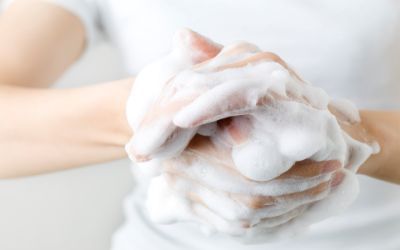Patients' Health Motivates Workers to Wash Their Hands

Campaigns about handwashing in hospitals usually try to scare doctors and nurses about personal illness, says Adam Grant, a psychological scientist at the Wharton School, University of Pennsylvania. "Most safety messages are about personal consequences," Grant says. "They tell you to wash your hands so you dont get sick." But his new study, which will be published in an upcoming issue of Psychological Science, a journal of the Association for Psychological Science, finds that this is the wrong kind of warning.
Handwashing is an eternal problem for hospitals. Healthcare professionals know its the best way to prevent the spread of germs and diseases. But, on average, they only wash their hands about a third to a half of the time they come into contact with patients and germs.
Grant had done research in hospitals before, on topics like getting nurses to speak up about safety and reducing burnout among doctors. But when his first daughter was born, Grants attention was drawn to the hospitals signs about hand-washing. "I noticed a real disconnect between what the signs were emphasizing and what I knew as a psychologist," he says.
As a psychologist, Grant knew about "the illusion of invulnerability"that most people think they arent at risk of getting sick. His own research had also shown that people arent motivated only by avoiding dangers for themselves; they also go to work because they want to protect and promote the well-being of others. The problem was, the signs warned about personal risks. These messages should fall on deaf ears among healthcare professionals, who are frequently exposed to germs but rarely get sick. "If I dont wash my hands, Ill be okay. But patients are a vulnerable group," he says.
To test that, Grant and his coauthor, David Hofmann of the University of North Carolina at Chapel Hill, came up with two signs to post over dispensers for soap and hand sanitizer. One said "Hand hygiene prevents you from catching diseases." The other said "Hand hygiene prevents patients from catching diseases." They posted these signs above different dispensers in a hospital and recorded how often people washed, measuring how much soap and gel was used and having trained observers spy on their colleagues.
The sign about patients was the winner. Healthcare professionals were much more likely to wash their hands if they were reminded that they were keeping patients safe. The patient sign increased soap and gel use by 33 percent per dispenser, and healthcare professionals were 10 percent more likely to wash their hands. The sign about personal risks did no good.
"Our findings challenge prevailing wisdom in the healthcare professions," Grant says, "that the best way to get people to wash their hands is to scare them about their own health. Instead, his research demonstrates, you should remind them that handwashing helps others.
A lot of interventions work well in the beginning, then drop off, and these studies only lasted two weeks. Grant suggests that future studies should test whether these signs would continue to work in the long term. It might be possible keep the message fresh by changing the signs frequently to mention different patients, or to use different slogans, like "Did you wash your hands? What if your mother was the next patient you saw?" Grant says. The punch line here is that its not all about me. To motivate people to engage in safety behaviors, we should highlight the consequences for othersnot only themselves.
The Guardians of Animal Health: Who Are Veterinary Infection Preventionists?
March 21st 2025Veterinary infection control experts Leslie Kollmann, BS, AAS, CVT, CIC, Denise Waiting, LVT, and Leslie Landis, LVT, BS, discuss challenges, zoonotic disease risks, and the importance of education, collaboration, and resource development in animal care facilities.
The Latest on CLABSIs and CAUTIs: Evidence-Based Approaches for Infection Prevention
February 27th 2025Health care–associated infections like CLABSIs and CAUTIs threaten patient safety. Learn evidence-based strategies, new technologies, and prevention protocols to reduce these infections and improve outcomes.
Resilience and Innovation: The Pivotal Contributions of Black Americans to Health Care and Medicine
February 24th 2025During Black History Month, we honor the resilience and contributions of Black medical professionals in health care. Despite barriers, they have led transformative changes, advocating for equitable access and medical excellence. Recognizing their impact ensures a more inclusive health care future for all.
Glove Usage Guideline: From The Joint Commission, CDC, and World Health Organization
February 17th 2025Proper glove use is crucial in health care settings to prevent infections. Guidelines from TJC, CDC, and WHO stress correct selection, usage, and disposal to minimize health care–associated infections (HAIs) and cross-contamination risks. Infection preventionists (IPs) play a key role in educating staff, enforcing compliance, and improving patient safety through standardized glove practices.